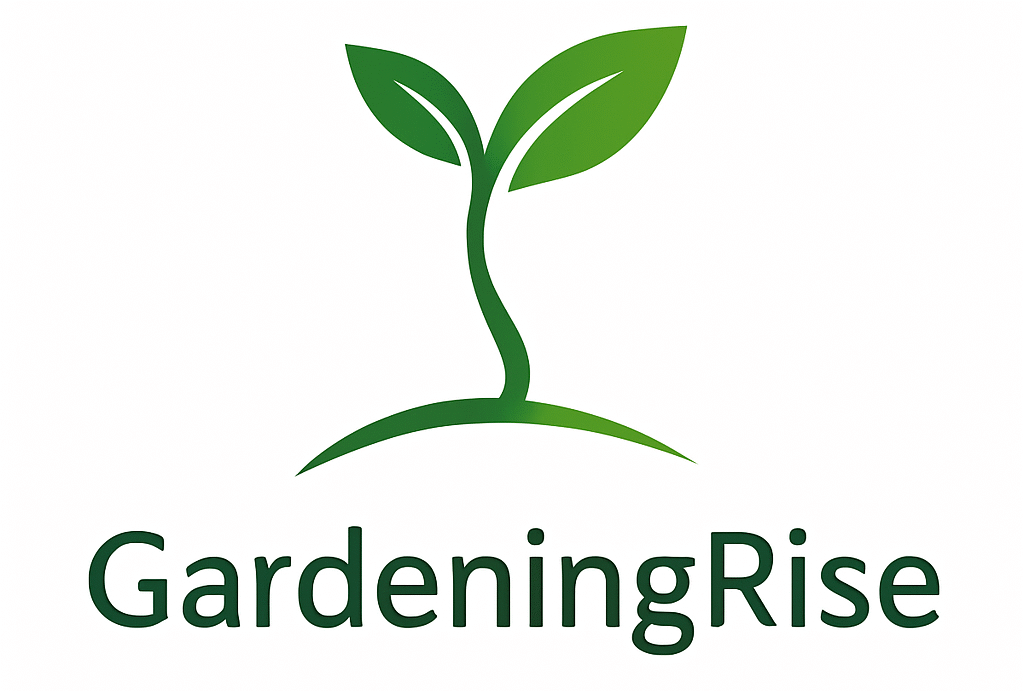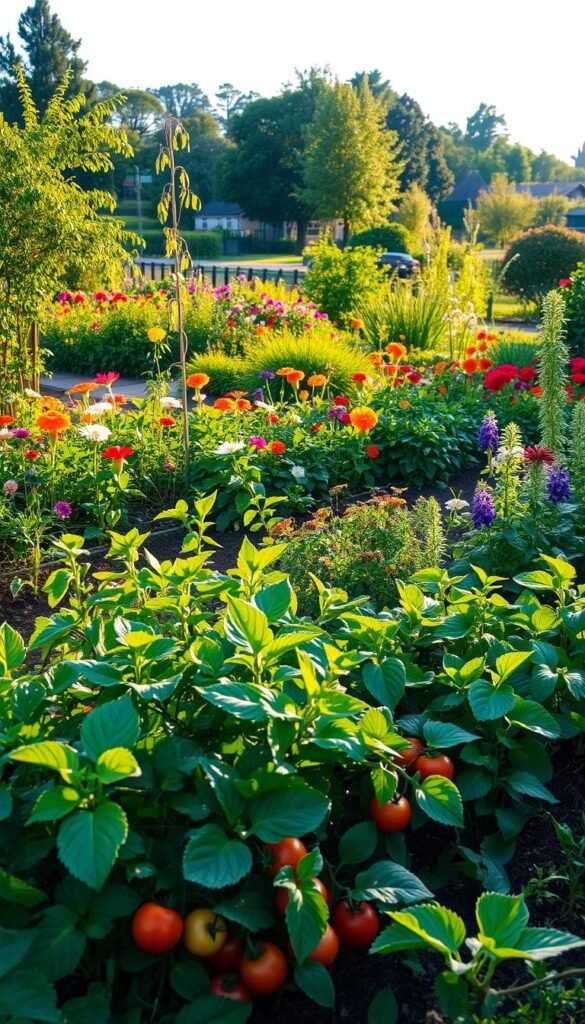What if your backyard could become a thriving habitat while cutting maintenance? Modern growing methods blend beauty and science to create landscapes that regenerate ecosystems instead of depleting them. Recent studies from Colorado University and MIT reveal how healthy soil acts as the foundation for carbon storage and plant vitality.
Traditional single-crop plantings often struggle against pests and weather extremes. By mixing native flowers, food crops, and drought-resistant species, you build natural defenses. Research from Cornell shows diverse gardens attract beneficial insects and self-regulate moisture levels.
Every element works together in this approach – from earthworms aerating soil to birds controlling aphids. This creates spaces that mimic wild ecosystems, requiring fewer inputs over time. Discover how strategic plant choices boost visual appeal while supporting local wildlife.
These methods don’t just benefit your plot. They contribute to larger environmental goals like cleaner air and water filtration. Whether growing tomatoes or cultivating flower beds, you’ll learn to work with nature’s patterns for lasting results.
Understanding the Foundations of Regenerative Garden Design

Healthy dirt does more than grow plants—it’s a living network beneath your feet. Regenerative practices focus on nurturing this underground world to create self-sustaining spaces. Let’s explore how soil science and biodiversity work together like pieces of a natural puzzle.
The Science of Soil Health and Organic Matter
Your soil’s health determines everything growing above it. Rich, crumbly earth teems with fungi and bacteria that help plants absorb nutrients. Add compost or leaf mulch to boost organic matter—this feeds earthworms and improves water retention.
Topsoil forms slowly over centuries, so protect what you have. Let fallen leaves decompose naturally to build humus. This dark gold acts like a sponge, storing moisture during dry spells and preventing erosion during heavy rains.
Embracing Biodiversity for a Resilient Ecosystem
Mix flowers, herbs, and veggies to create a buzzing habitat. Marigolds repel root-eating nematodes, while dill attracts ladybugs that devour aphids. This approach mirrors permaculture gardening design principles, where each plant serves multiple roles.
Diverse plantings:
- Invite pollinators with staggered bloom times
- Create microclimates for delicate seedlings
- Break pest cycles through natural competition
Tall sunflowers shelter shorter crops from wind, while clover adds nitrogen to the soil. These partnerships reduce the need for fertilizers and pesticides, letting nature handle the heavy lifting.
Mapping Your Garden and Assessing Soil Conditions
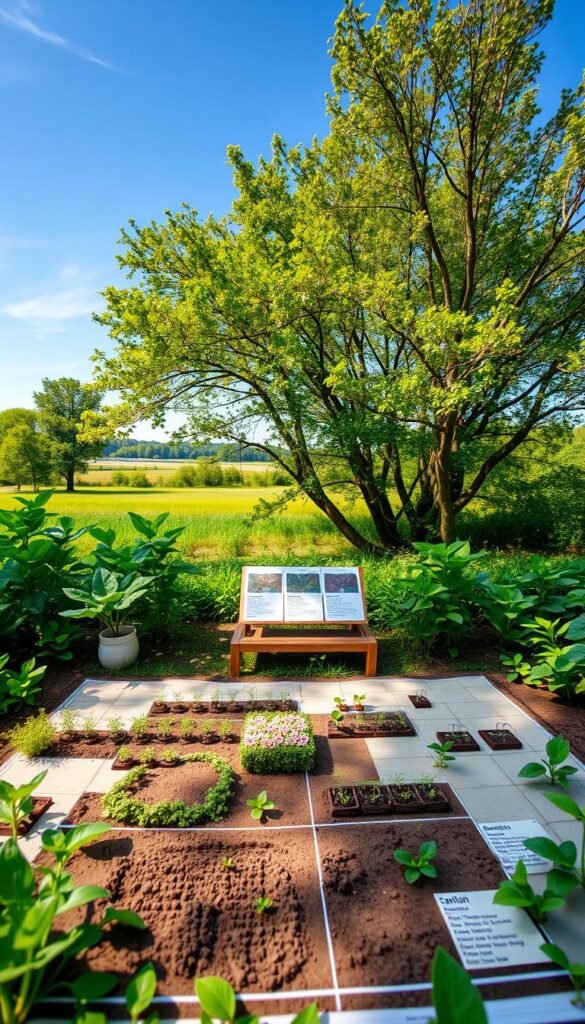
Unlock your outdoor space’s potential by charting its unique sun, soil, and water patterns. This detective work reveals hidden opportunities for thriving plants while avoiding common pitfalls.
Creating a Detailed Garden Site Map
Grab graph paper and mark permanent features like trees or slopes. Track sunlight every 2 hours—those shady corners might host mushrooms instead of tomatoes. Watch how rainwater moves after storms to spot drainage issues.
| Observation Focus | Tools Needed | Key Insights |
|---|---|---|
| Sun Patterns | Compass, timer | Identify full-sun vs. partial-shade areas |
| Water Flow | Rain gauge, notebook | Locate natural irrigation zones |
| Soil Quality | Test kit, jars | Determine nutrient gaps |
Testing Soil and Identifying Key Needs
Dig 6″ deep in five areas for accurate samples. Simple jar tests show sand/clay ratios, while kits measure pH and nutrients. Acidic soil? Blueberries will thrive. Alkaline? Try asparagus.
Microclimates matter too. That south-facing wall creates a warm pocket for early crops, while low spots stay frosty longer. Pair these findings with seasonal care strategies for year-round success.
This groundwork helps match plants to their ideal homes. You’ll waste less water, prevent disease, and create habitats that support local ecosystems naturally.
Implementing Organic Practices and No-Till Methods
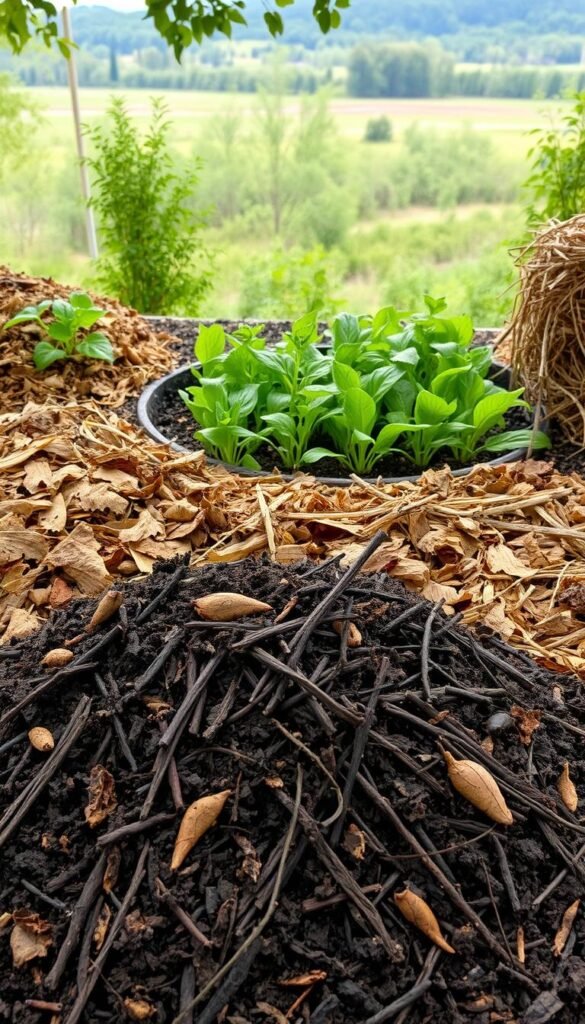
What if your leftover banana peels and fallen leaves could become your garden’s superpower? Organic growing methods turn everyday materials into tools for healthier plants and richer earth. These approaches work with natural processes rather than disrupting them, creating self-sustaining systems.
Adopting No-Till Techniques to Protect Soil Structure
Skip the rototiller and let earthworms do the digging. No-till methods preserve delicate fungal networks that help plants access nutrients. Try raised beds filled with layered compost or hugelkultur mounds using fallen branches. For existing plots, use a broadfork to aerate soil without flipping layers.
Building Nutrient-Rich Compost and Mulch
Your compost pile is a living recipe. Alternate green materials like vegetable scraps with brown layers of dry leaves. Turn the pile weekly to speed decomposition—within months, you’ll have crumbly black gold. Spread finished compost around plants or use it to kickstart new beds.
Utilizing Kitchen Scraps and Grass Clippings Effectively
Keep a countertop bin for coffee grounds and eggshells. Mix these nitrogen-rich scraps with carbon sources like shredded paper or straw. Neighbors often bag grass clippings and autumn leaves—ask to collect them for free mulch material. This cuts waste while feeding your soil’s microbiome.
One gardener transformed her clay soil using these methods: “My tomato yield doubled when I stopped tilling and started composting systematically.” By mimicking nature’s recycling system, you create gardens that thrive with less effort.
Revolutionize Your Garden with Sustainable Design Principles

Imagine a landscape where every plant pulls double duty—beautifying spaces while feeding pollinators and improving soil. By blending native species with smart pairings, you create ecosystems that maintain themselves. Let’s explore how to harness these natural alliances.
Strategic Plant Pairings for Mutual Benefit
Companion planting acts like nature’s teamwork. Basil boosts tomato flavor while repelling hornworms, and onions shield broccoli from cabbage moths. These partnerships reduce pest issues and improve yields without chemicals.
| Plant Pair | Benefits | Best For |
|---|---|---|
| Basil + Tomatoes | Repels flies/mosquitoes, enhances flavor | Vegetable beds |
| Onions + Broccoli | Deters cabbage worms | Cool-season crops |
| Marigolds + Squash | Nematode control | Warm-season plantings |
Flowers That Work While They Bloom
Incorporate native blooms like coneflowers and milkweed to attract natural pest control. A study showed gardens with 70% native plants host 3x more beneficial insects. These species need less water and adapt better to local conditions.
Consider adding region-specific trees like oak or serviceberry. They provide shade, sequester carbon, and support over 500 caterpillar species—vital for bird populations. Maryland’s success with native tree planting proves this approach scales beautifully.
Start small: replace one non-native shrub with a blueberry bush or plant goldenrod along borders. These changes build habitats while keeping maintenance low—nature handles the heavy lifting when you choose the right players.
Water Management, Energy Conservation, and Wildlife Support
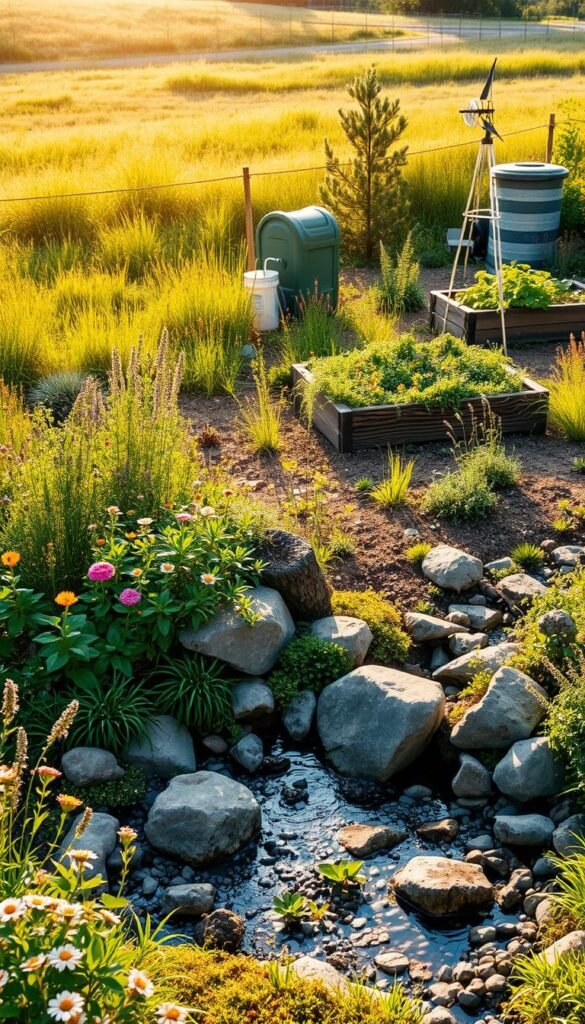
Transform water challenges into garden allies while crafting habitats for local creatures. Smart strategies let you nurture plants and support ecosystems without wasting resources.
Smart Irrigation and Rainwater Harvesting Systems
Drip irrigation delivers water straight to roots through tiny tubes. You can cut water waste by up to 50% compared to sprinklers. Pair these systems with rain barrels or cisterns to store stormwater for dry weeks.
In warm climates, drought-resistant varieties like Dark Star Zucchini thrive with minimal watering. Mulch beds with straw or wood chips to lock in moisture and block weeds naturally.
Creating Wildlife-Friendly Habitats in Your Yard
Turn your space into a living buffet for pollinators and birds. Include these elements:
- Shallow dishes with stones for butterfly hydration
- Native shrubs like serviceberry for nesting sites
- Milkweed patches for monarch caterpillars
| Plant | Wildlife Supported | Key Feature |
|---|---|---|
| Coneflower | Bees & Butterflies | Summer nectar source |
| Sunflowers | Birds | Seed production |
| Goldenrod | Native Bees | Late-season pollen |
Rain gardens with swamp milkweed or blue flag iris manage storm runoff while attracting dragonflies. These wet zones filter pollutants and create mini-ecosystems during heavy rains.
Cultivating a Lasting Eco-Friendly Garden Experience
Your green space becomes smarter each season when you embrace ongoing learning. Keep a journal to note which plants thrive in specific areas or how wildlife interacts with your layout. Studies show gardens using 4-year crop rotations boost soil health while slashing erosion by 40%.
Rotate plant families annually—like moving tomatoes to where cucumbers grew last year. This prevents disease buildup and keeps earth nutrient-rich. Winter months offer hidden opportunities: sow clover or rye as cover crops to protect bare soil and add organic matter.
Balance beauty and ecology by planning seasonal highlights. Early bulbs feed pollinators awakening in spring, while winterberry holly adds color when other plants rest. Pair these strategies with budget-friendly methods like composting kitchen scraps for a self-renewing system.
Your efforts create living classrooms where every observation fine-tunes your approach. Over time, you’ll spend less time battling pests and more enjoying nature’s balanced artistry.
